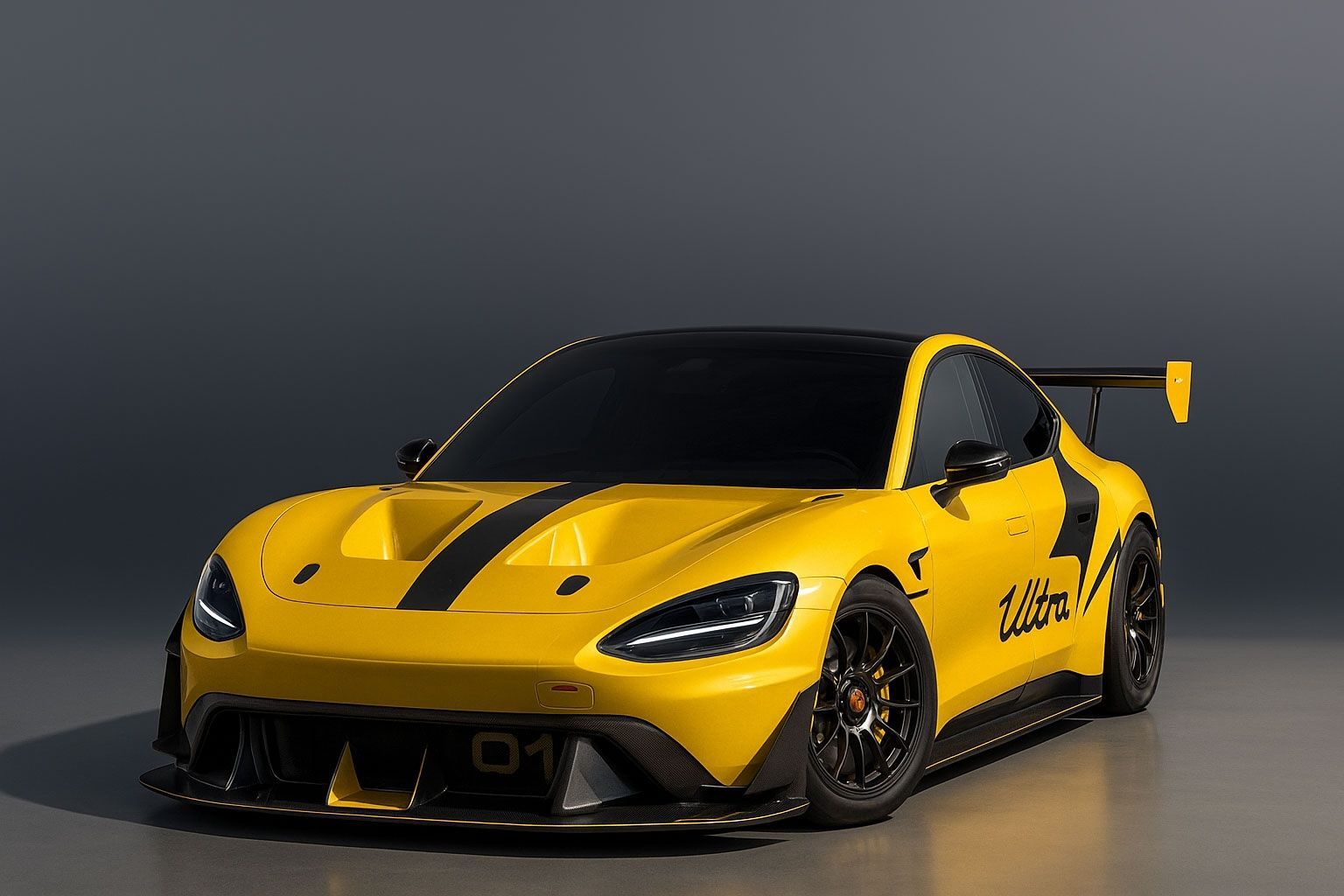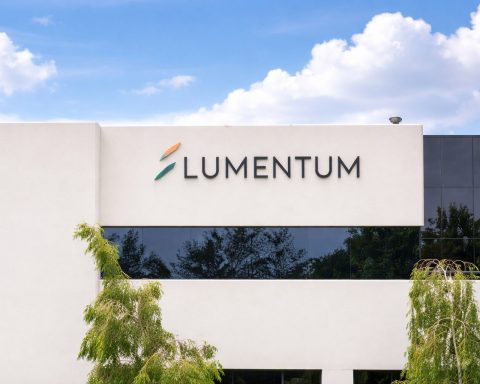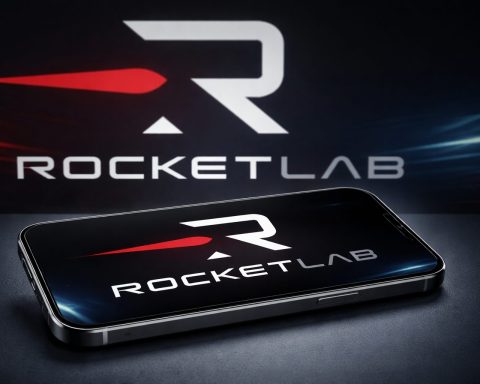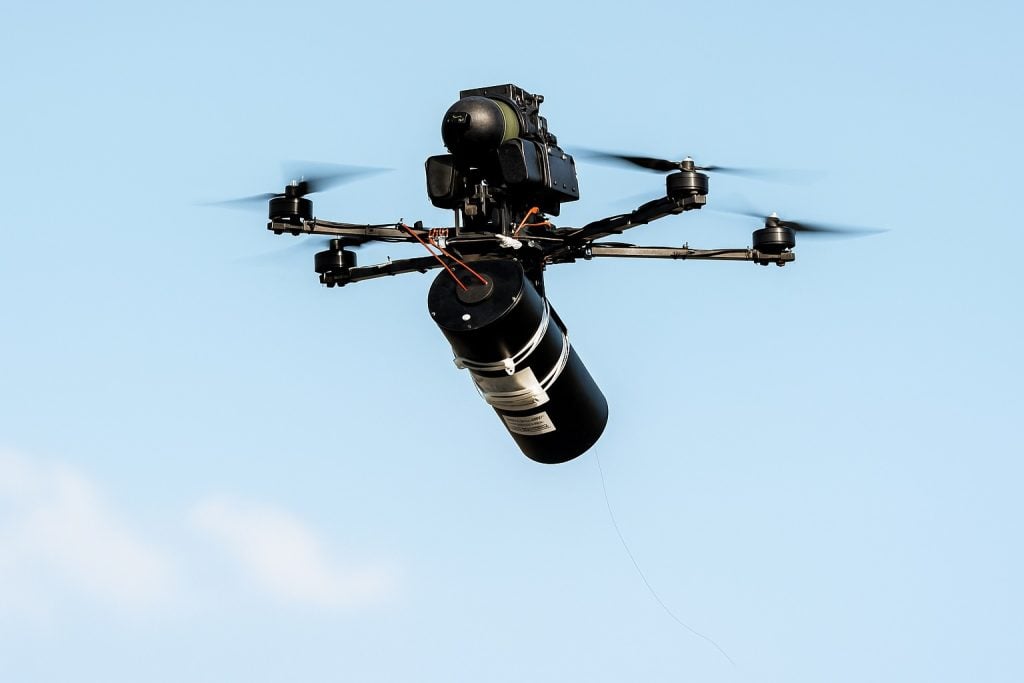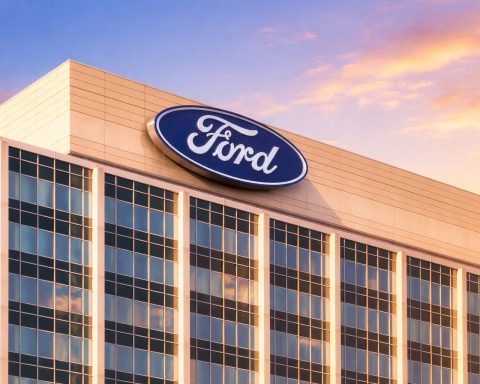- China produced over 11–13 million electric cars in 2024, about half of all new cars sold in the country, and accounted for roughly 58–70% of global EV output.
- BYD Auto became the world’s largest EV producer, accounting for about one‑third of China’s EV sales and surpassing Tesla’s global volumes in 2024.
- NIO’s ET7 offers up to 1,000 km of range with a 150 kWh semi‑solid battery, delivering the longest EV range among production sedans.
- NIO operates more than 3,000 battery‑swap stations across China and Europe, enabling ~3‑minute battery exchanges.
- The Xiaomi SU7 Ultra is priced around ¥529,900 (~$73,000) and delivers 1,526 hp, 0–100 km/h in 1.98 s, and a top speed over 350 km/h.
- GAC Aion Hyper SSR, launched in late 2022, has 1,225 hp, 0–100 km/h in 1.9 s, with the Ultimate version priced at about ¥1.686 million (~$240,000).
- BYD Yangwang U9, priced at ¥1.68 million (~$235,000), achieves 309 km/h and 0–100 km/h in 2.36 s with BYD’s DiSus‑X suspension and e4 platform.
- NIO EP9, produced in a limited run of 16 units, set Nürburgring EV lap records (6:45.9) with 1,341 hp and a top speed of 313 km/h.
- In 2024 China exported nearly 5 million vehicles (all powertrains), more than any other country, with many of those being EVs.
- IEA projections show EVs reaching about 60% of China’s new‑car sales by 2025 and 80% by 2030, with annual EV output possibly reaching 15–20 million by 2030.
1. Chinese EV Production Powerhouse – Scale, Players & Hubs
China’s electric vehicle industry is the largest in the world, accounting for 58–70% of global EV production in recent years [1] [2]. In 2024 alone, China produced over 11–13 million electric cars (battery EVs and plug-in hybrids), which was about half of all new cars sold in China [3] [4]. This output is more than four times the U.S. EV sales and nearly exceeds total global EV sales from just two years prior [5]. Such scale firmly establishes China as the world’s EV manufacturing hub, responsible for 70%+ of global EV output [6]. It also dominates EV exports – 1.25 million EVs exported in 2024 (about 40% of global EV exports) came from Chinese factories [7] [8].
Key Domestic Manufacturers: A fierce roster of Chinese automakers drives this boom. BYD Auto – now the world’s largest EV producer – alone accounts for about one-third of China’s EV sales (over 1.8 million “New Energy Vehicles” sold in 2022) [9] [10]. BYD surpassed Tesla’s global volumes in 2024, becoming the top EV maker worldwide [11]. Other major players include state-owned SAIC Motor (maker of Wuling and MG EVs), private giants like Geely (owner of Volvo and Polestar), Great Wall (Ora EV brand), GAC Group (Aion brand), and a cadre of newer EV-focused firms: NIO, Xpeng, Li Auto, Chery, Changan, Leapmotor, Zeekr, and more [12] [13]. In fact, Chinese brands now dominate their home market – five of the top seven EV sellers are domestic companies (BYD and SAIC at #1 and #2) [14]. Even relatively young startups like Leapmotor are scaling fast (Leapmotor sold 280,000 EVs in 2024, ranking 7th in China – outselling Volkswagen) [15]. Foreign automakers, once market leaders in China, are increasingly lagging in EV sales; Tesla is the notable exception with a strong Chinese presence (via its Shanghai Gigafactory), but legacy brands like GM, VW, Toyota now hold much smaller EV shares [16] [17].
Production Hubs & “EV Cities”: While early EV manufacturing centered around traditional auto hubs like Shanghai and Shenzhen, China’s EV surge has sparked new regional centers [18]. Notably, Xi’an (Shaanxi) has risen as a mega-production base – BYD’s massive Xi’an plant built ~995,000 EVs in 2022 (over half of BYD’s output), briefly making Xi’an the #1 city for EV production in China, ahead of Shanghai and Shenzhen [19]. Shenzhen (BYD’s HQ), Guangzhou (GAC’s base), and Liuzhou in Guangxi (home of the Wuling Mini EV) remain key clusters. Inland cities have aggressively courted EV investment: Hefei (Anhui province) poured billions to attract NIO’s headquarters and factories, turning the city into a magnet for EV makers and suppliers [20]. Yibin (Sichuan) lured battery giant CATL to build giga-factories locally [21]. Even smaller cities like Jinhua (Zhejiang) and Changzhou are branding themselves as “EV towns,” offering industrial parks and incentives to EV startups [22] [23]. This widespread regional support, with dozens of cities vying to be the “Detroit of EVs,” has created sprawling EV supply chains across China. From coastal export hubs to interior provinces, EV assembly plants now anchor local economies, buoyed by state-backed funds and infrastructure dedicated to the EV industry [24] [25].
China’s enormous scale and supportive policy landscape (e.g. tax exemptions, license plate advantages for EVs) have thus enabled rapid expansion. The result: Chinese factories are producing EVs at unprecedented volume and efficiency, driving down costs and churning out everything from tiny city cars to luxury smart SUVs. In sum, China has transformed into the global epicenter of EV production, with a stable of domestic manufacturers outpacing foreign rivals on their home turf and increasingly on the world stage [26] [27].
2. Cutting-Edge Innovations: Batteries, Smart Tech & Design in Chinese EVs
Chinese EV makers are not just about scale – they’re innovating rapidly in technology and features, often outpacing Western competitors. Battery Technology is a prime example. China dominates the battery supply chain (over 80% of EV batteries are made by Chinese firms) and is pioneering new chemistries for better safety, range, and cost [28]. BYD’s signature Blade Battery (an ultra-thin, LFP-based battery pack) is designed for higher fire safety and longevity, allowing affordable models to achieve robust range. CATL – the world’s largest battery maker – has introduced a new high-density cell (the Qilin battery) and is even commercializing sodium-ion batteries as a low-cost alternative to lithium [29] [30]. In early 2023, CATL unveiled a “semi-solid state” 150 kWh battery that NIO integrated into its flagship sedan – enabling an astonishing 1,000+ km (650+ mile) driving range on one charge [31] [32]. This gives NIO’s ET7 sedan the longest EV range in the world (far exceeding Tesla’s ~402-mile record) [33]. China is also a leader in battery swapping: NIO has popularized swap-stations where a depleted battery can be automatically exchanged for a full one in ~3 minutes. It operates over 3,000 swap stations across China (and now Europe), making battery swapping a practical reality at scale [34]. This approach, alongside ultrafast charging advances, addresses EV charging time concerns in a uniquely Chinese way.
Smart Infotainment and Connectivity: Chinese EVs often redefine the in-car digital experience. Many models feature expansive high-resolution displays, AI assistants, and even on-board “smart home” integration that would be considered futuristic elsewhere. For instance, the new Xiaomi SU7 EV (from the smartphone giant Xiaomi) comes with a 16.1-inch infotainment screen plus a colossal 56-inch head-up display (HUD) projecting information across the windshield [35]. This setup, combined with support for Apple CarPlay and Android, essentially turns the car into a rolling smart device. Incredibly, the SU7’s system can remotely control over 1,000 home devices – letting owners manage smart appliances from the driver’s seat [36]. Such IoT connectivity far surpasses what most Western cars offer, and it’s available at a mid-market price (~£25,000) [37]. Chinese automakers also experiment with interactive cabin features: voice-activated functions (often with Mandarin voice assistants tuned for local services), built-in dashcams and 360° parking cameras as standard, in-car karaoke machines (a popular feature), and even cinema-style passenger displays. One Huawei-backed EV (Aito M9) is equipped with a rollable 32-inch screen that turns the cabin into a private theater [38]. Moreover, Chinese brands treat the car as a digital living space – at the 2023 Shanghai Auto Show, concepts showed seats with massaging and reclining “lounge” modes and ambient lighting synced to music [39]. Overall, the infotainment UI in many Chinese EVs is sleek and highly connected: for example, BYD’s DiLink system runs on Huawei software and some models feature 5G connectivity and even in-car apps like WeChat, allowing messaging or payments from the dashboard (features tailored to tech-savvy Chinese consumers). The trend is toward the “smartphone on wheels” concept – Chinese EVs are often smarter and more feature-loaded than their foreign counterparts at the same price point [40] [41].
Advanced Driver Aids & Autonomy: China’s EV makers are racing to implement high-level ADAS (advanced driver-assistance systems) and semi-autonomous driving. Many premium Chinese EVs are laden with sensors – it’s common to see multiple LiDAR units, high-resolution cameras, and ultrasonics integrated into the vehicle design for 3D sensing. For example, Xpeng’s P5 sedan was one of the world’s first production cars with dual front-mounted LiDAR for enhanced object detection. The Xiaomi SU7 mentioned above carries 11 cameras, 12 ultrasonic radars, plus LiDAR feeding data to an NVIDIA Orin AI computer, enabling features like autonomous highway driving, automated parking, and intelligent cruise control [42]. NIO has developed its “Navigate on Pilot” system similar to Tesla’s Autopilot, and Baidu’s Apollo (in partnership with BAIC) operates robotaxi fleets on public roads in cities like Beijing and Wuhan – a sign of China’s strength in self-driving tech. In fact, Chinese EVs increasingly come with pseudo-autonomous capabilities out-of-the-box: lane centering, traffic jam assist, self-parking, and even “swarm” data where cars crowdsource map updates. It’s telling that Geely recently demonstrated the world’s first autonomous drift of a production car (a feat using AI chassis control) [43]. Additionally, the world’s first mass-produced drive-by-wire system (no mechanical steering linkage) has debuted on a Chinese EV – NIO’s ET7 uses a fully electronic steering system homologated for road use [44]. These innovations underscore how Chinese companies view EVs as high-tech gadgets as much as vehicles. A Chinese battery executive even coined the term “EIV” (Electric Intelligent Vehicle) to emphasize that Chinese EVs are intelligent cars with capabilities beyond traditional autos [45] [46]. In short, many Chinese EVs boast cutting-edge autonomous driving hardware and software, often leapfrogging Western cars in sensor suite and AI integration.
Design and Unique Features: In terms of styling and design elements, Chinese EVs have evolved rapidly – shedding early derivative looks to create bold, futuristic designs. Exterior-wise, makers like NIO, Xpeng, and HiPhi employ sleek aerodynamic shapes often punctuated by LED light bars, illuminated logos, and concept-like lighting effects. Some designs are truly unique: the HiPhi X SUV, for example, has an unconventional split door system (both gull-wing and suicide doors for rear access) and a light-up grille that can display patterns – emphasizing a blend of luxury and tech. New brands such as Avatr, Zeekr, Voyah (to name a few) hire international design talent to craft vehicles with global appeal but also daring elements (e.g. sports car-style pop-out handles, wrap-around glass roofs, etc.). Interiors of Chinese EVs are often spacious and high-tech: big panoramic screens, minimalistic dash (some go Tesla-style with no instrument cluster, like on certain EV startups’ models [47]), plus plush materials (microfiber suede, sustainable leathers) to convey luxury. Chinese automakers have also been innovating in segments – launching types of EVs not common elsewhere. For instance, the Wuling Hongguang Mini EV kicked off a craze for ultra-compact mini cars, spurring a wave of colorful, customizable micro-EVs ideal for dense cities [48]. At the opposite end, large luxury EV MPVs and SUVs have emerged: e.g. the Zeekr 009, a lavish electric van with executive seating, or Hongqi E-HS9, a full-size electric SUV often dubbed “China’s Rolls-Royce EV” for its opulence. Many Chinese luxury EVs incorporate touches like built-in refrigerators, crystal shift knobs, and ambient “starlight” headliner LEDs. Even more playful features are appearing – BYD’s new Yangwang U9 supercar can literally jump off the ground using its hydraulic suspension (a showcase of BYD’s DiSus-X body control tech) [49], and can “dance” in sync with music. In sum, Chinese EV brands aren’t afraid to experiment with form and function, introducing novel features (battery swap, in-car smart assistants, air purification systems, etc.) and styling cues that often set their vehicles apart from the more conservative designs of some legacy brands. The result is a very diverse domestic EV lineup, from practical to flamboyant, all unified by a common thread: tech-forward innovation.
3. Price Spectrum: EVs for Every Budget – from Entry-Level to Luxury
One reason for China’s EV success is the wide range of pricing – there’s an electric car for virtually every consumer segment, often at prices significantly lower than equivalent Western models. Here’s a breakdown of Chinese EV pricing tiers and examples:
- Entry-Level City EVs (Microcars): China produces ultra-affordable EVs that are unheard of elsewhere. The poster child is the Wuling Hongguang Mini EV, a tiny 4-seater city car that launched at a jaw-dropping $4,100 base price [50]. Even fully loaded, this best-selling mini EV costs only around $5,600 [51]. For context, $5k in the West might buy you a used 15-year-old gas car – in China it buys a brand-new electric runabout with air conditioning and a ~120 km range. This sub-$5k segment has exploded: competitors like the Chery QQ Ice Cream, Dongfeng Nano EV, and Geely Panda Mini have joined the fray with prices typically between $5,000–$8,000. These vehicles are spartan (e.g. 20–30 kW motors, ~100 km range, basic safety features) but hugely popular for short commutes. In 2025, a new four-door version of the Wuling Mini EV launched around ¥40,000 (~$5,500), keeping the price rock-bottom [52]. Slightly larger “budget” EVs like the Leapmotor T03 offer more power and range (~200 km) for around $8,000 – as one new owner noted, her Leap T03 was just $8.2k yet beat the Wuling Mini in space, acceleration, and features (even an app for remote AC) [53]. Essentially, Chinese consumers can go electric for under $10k, a price point with no equivalent in North America or Europe. (Western markets have no new EVs below $20k–$25k as of 2025.) These entry EVs have made electric mobility accessible to the masses in China and helped EVs penetrate smaller cities and rural areas.
- Mainstream Compact EVs: In the next tier up (roughly $15k–$30k), Chinese brands offer a plethora of sedans, hatchbacks, and crossovers that serve as family cars. For example, BYD Dolphin, a popular compact hatchback with 400 km range, starts around ¥116,000 (~$16,000) – significantly cheaper than comparably sized foreign EVs. A class up, the BYD Seal (a Model 3-sized sedan with 550 km range) costs about ¥212,000 (~$30k). By comparison, a Tesla Model 3 in China starts around ¥250,000 ($35k), so BYD undercuts it while offering similar or better range and features. Another bestseller, the Tesla Model Y (made-in-China), is priced around ¥263,000 ($37k) for the base model – but domestic rivals like the Aion Y Plus (compact SUV) come in at $20k-$25k with competitive specs. Many attractive Chinese EV sedans – Xpeng P7, NIO ET5, GAC Aion S – populate this mid-market range between $25k and $40k. They typically offer 400–600 km range, modern tech (ADAS, large screens), and refined interiors for tens of thousands less than German or American equivalents. Notably, the average EV price in China has been falling and is well below that in Europe/US [54] [55]. Consumers can get a new electric SUV like the Haval (Great Wall) NEV or Geely Geometry series in the low-$20k range – prices that in the West might only buy a subcompact gasoline car. This aggressive pricing is enabled by China’s domestic battery production (cheaper LFP batteries), economies of scale, and cost-focused engineering (Chinese EV makers have spent a decade optimizing supply chains to cut costs [56]). In short, the middle of China’s EV market is characterized by value for money: solid range and features at prices often 30-50% lower than comparable foreign EV models.
- Premium & Luxury EVs: At the higher end, China also has a growing selection of premium EVs, priced from around ¥300,000 up to ¥600,000 ($45k to $90k). These include luxury SUVs like the NIO ES8/EL8 and Li Auto L9 (a large range-extended SUV), as well as executive sedans like the NIO ET7 and BYD Han. A NIO ET7 with a long-range battery pack costs about ¥448,000 ($65k) and offers features rivaling a Mercedes-Benz EQE or Tesla Model S – at a lower price point. For instance, the ET7 comes standard with a leather interior, advanced NAD (NIO Autonomous Driving) hardware (including LiDAR), and option of a 150 kWh battery delivering 1,000 km range [57], all for under $70k. European luxury EVs with similar range (e.g. Mercedes EQS 450+) or tech often cost well above $100k. Similarly, HiPhi (a Chinese ultra-premium EV brand) sells the HiPhi X SUV around $80k+ and HiPhi Z GT car in the $90k range – these vehicles boast exotic designs, coach doors, and lounge-like cabins to compete with high-end BMWs/Audis (but still generally cheaper for the feature set). Hongqi (Red Flag), the Chinese luxury marque, has an electric flagship E-HS9 SUV (priced ~$80k in China) that’s being exported to Europe as a value alternative to luxury SUVs. While these upper-tier Chinese EVs are not “cheap” in absolute terms, they tend to undercut their Western counterparts by 10–30% in price. Moreover, they often include unique services – for example, NIO’s premium models come with free battery swapping and a mobile service fleet as part of the purchase package, adding value. The Chinese consumer’s expectations at this level (software updates, concierge services, cutting-edge gadgets) are shaping these offerings to be very competitive against Tesla’s and the Germans’ luxury EVs.
- Exotic and Performance EVs: At the extreme top of the market, a few Chinese EVs venture into true supercar territory (usually as halo models). These are limited-production and six-figure price. For example, BYD’s Yangwang U9 – an all-electric supercar launched in 2024 – is priced at ¥1.68 million (~$236,000) [58]. That lofty sum actually makes it a bargain in the supercar world: the U9 costs a fraction of a Bugatti or Rimac and yet delivers hypercar performance (0–100 km/h in 2.36 seconds, 1,300 hp) [59]. Another example is the GAC Aion Hyper SSR, a 1,225 hp electric supercar that starts around ¥1.29 million (~$185k) with an Ultimate edition at ¥1.69M capable of 0–100 km/h in just 1.9 seconds [60]. (We will explore these more in the next section.) Meanwhile, earlier Chinese electric supercars like the NIO EP9 were produced in very small numbers (~16 units) at about $1–$1.5 million each – still, that’s half the cost of some European hyper-EVs. These halo cars are not mass-market by any means, but they signal that Chinese tech companies can build world-class performance cars (and often at a comparative price advantage). It’s also worth noting the high-tech features to price ratio in many Chinese performance EVs: for instance, a ~$50k sporty EV sedan (Xpeng P7 performance or BYD Han) offers 0-100 km/h in ~3.9s and Brembo brakes, which is sports-car performance on a budget. This democratization of performance is another trend in China’s EV market – thanks to instant electric torque, even mid-priced models can be quite quick (many boasting 0–50 km/h times under 4 seconds for zippy city driving). In summary, whether one has $5k or $100k+ to spend, the Chinese market provides an EV option, usually at a lower cost than anywhere else in the world for a similar vehicle. This breadth and affordability – from tiny budget EVs to luxe high-tech cruisers – is a key factor in China’s EV adoption surging to ~40-50% of new car sales [61] [62].
4. Fastest & Most Expensive Chinese EVs – Supercar Showcase (with Global Comparisons)
China isn’t just producing mass-market EVs; it’s also home to some headline-grabbing electric supercars that push the limits of speed and technology. Below, we highlight a few of the fastest and priciest Chinese EVs – complete with their jaw-dropping specs – and see how they stack up globally.
The BYD Yangwang U9 is a 2-seater electric supercar that headlines China’s luxury EV segment. Priced at ¥1.68 million (~$235,000) [63], the U9 delivers extreme performance: a top speed of 309 km/h and 0–100 km/h in just 2.36 seconds [64]. This quad-motor hyper EV packs 1,287 horsepower and advanced torque vectoring. Notably, it uses BYD’s innovative e<sup>4</sup> platform and DiSus-X suspension, which is so advanced it can make the car jump off the ground and even drive on three wheels in emergencies [65] [66]. Such tricks aside, the U9’s acceleration puts it among the quickest production cars on earth – comparable to the $2M Croatian-made Rimac Nevera (1.85 s 0–60 mph) and beating many famous supercars. In fact, Tesla’s much-anticipated second-generation Roadster is claimed to do 0–100 km/h around 2.1 s, only marginally faster than the U9 [67]. Yet the U9 costs about one-fifth of a Rimac or Lotus Evija, showcasing how Chinese brands are undercutting on price even in the hypercar class. Beyond raw speed, the Yangwang U9 is about tech-driven luxury: it features a carbon-fiber structure for lightness, a high-end audio system, and track-focused telemetry built in [68] [69]. With deliveries starting in Summer 2024, the U9 firmly plants China in the supercar conversation, offering “Ferrari-beating” acceleration in an electric package that is distinctly Chinese in its technology (e.g. LFP Blade battery for safety and 500 kW fast charging) [70].
GAC Aion’s Hyper SSR is another electric missile from China. Launched in late 2022, the Hyper SSR is billed as “China’s first EV supercar”, boasting 1,225 hp and an on-wheel torque of 12,000 Nm thanks to dual high-performance motors [71]. The top-spec Hyper SSR Ultimate (shown above with its butterfly doors) is priced at ¥1.686 million (~$240,000) and does 0–100 km/h in a blistering 1.9 seconds [72]. That acceleration, if verified in production, would make it one of the world’s quickest street-legal cars – edging out the Plaid-mode Tesla Model S (1.99 s 0–60 mph) and on par with the expected Tesla Roadster 2.0 (1.9 s) [73]. GAC achieved this via a 900V silicon carbide (SiC) inverter platform, enabling incredible power output and efficiency [74]. The Hyper SSR’s design includes inductive automatic butterfly doors (they open upward at the press of a button or brake pedal) and a full carbon-fiber exterior for light weight [75]. GAC boldly claimed at launch that this is “the fastest car on the planet,” and while that involves a bit of hyperbole, the SSR’s 1.7G of launch acceleration is truly racecar-level [76] [77]. For context, its 0–100 km/h time is just shy of the Bugatti Chiron’s (which is ~2.4 s) and nearly matches the Rimac Nevera’s world-record quarter-mile times, but at a price under $250k. The Hyper SSR is set for limited production (deliveries began in late 2023), essentially serving as a halo product for GAC’s Aion EV brand. It demonstrates that Chinese automakers can engineer at the bleeding edge of performance – in this case, marrying Formula One levels of power with EV tech. In global comparisons, only a few multimillion-dollar hypercars (Rimac, Aspark Owl, etc.) out-accelerate the Hyper SSR, and none at its price point. This underscores how China’s EV revolution spans not only affordable cars but also record-smashing supercars, reshaping performance benchmarks. [78] [79]
Beyond these newcomers, it’s worth recalling the NIO EP9, the electric supercar that put China on the performance map back in 2016. The NIO EP9 was a limited-production (just 16 built) track-oriented EV that set a Nürburgring lap record for EVs with a time of 6:45.9 [80]. With 1,341 hp (1 MW of power) and a top speed of about 313 km/h, the EP9 could sprint 0–100 km/h in ~2.7 seconds and 0–200 km/h in 7.1 s [81]. It was also capable of autonomous driving on track. At the time of its debut, media called it “the fastest, most expensive EV ever built” – one was driven by a reviewer who noted its 217 mph (350 km/h) top speed and $3.48 million price tag [82]. While that price was extraordinary (the EP9 was sold to NIO investors initially at ~$1.2M, but development costs might peg its value higher), the car demonstrated that a Chinese startup could outpace famed supercars on a circuit [83]. The EP9 held the EV lap record at several tracks and stood as the world’s fastest electric car for a time [84]. It has since been eclipsed in top speed by cars like the Rimac Nevera (412 km/h) and in acceleration by the new crop of EV hypercars, but it remains a milestone in China’s automotive history.
How They Compare Globally: The fastest Chinese EVs are now on competitive footing with the world’s best. In terms of acceleration, vehicles like the Hyper SSR (1.9 s 0–100) are essentially neck-and-neck with the quickest EVs globally (Tesla’s upcoming Roadster, Rimac Nevera, etc.) [85]. In top speed, a few hyper EVs (Lotus Evija, Rimac) can exceed 300 km/h by a good margin, but the Yangwang U9’s ~309 km/h is in supercar territory and not far off the likes of a Porsche Taycan Turbo S (~260 km/h) or Tesla Plaid (~322 km/h). Importantly, the cost of Chinese super-EVs undercuts others dramatically: for example, Croatia’s Rimac Nevera costs about $2 million, roughly 8× the price of a Hyper SSR for similar acceleration. Even Tesla’s Roadster, if it reaches production, is expected around $200k+ for Founders editions – close to the Chinese pricing, but Tesla famously delayed it for years whereas the Chinese cars are here now. On technology, Chinese hypercars bring unique innovations: the U9’s body control system (letting it “leap” to protect the car from bumps) is something even a Bugatti can’t do [86]. Meanwhile, more Chinese luxury EVs are incorporating performance alongside daily usability. A car like the NIO ET7 (a luxury sedan) might not be a supercar, but with a 150 kWh semi-solid battery, it can achieve 1000+ km range which no Tesla or Mercedes can match yet [87]. So in some metrics (range, charging, fancy features), Chinese high-end EVs lead.
It’s also notable that Chinese brands have ventured into motorsports: e.g. NIO’s Formula E team and SAIC’s involvement in Formula E helped drive performance R&D. As a result, the gap between Chinese and Western performance EVs has essentially closed – with China even taking the lead in some areas. The country’s fastest EVs can go toe-to-toe with Lamborghinis and Teslas on speed, while often delivering more tech per dollar. This would have been unimaginable a decade ago, when Chinese cars were seen as cheap, low-tech copies. Now, a Chinese EV holds the 0–100 km/h crown (1.9 s) for production cars [88], and BYD’s supercar beats legendary Italian exotics to 100 km/h – an emphatic statement of how far Chinese engineering has come in the EV era.
Extra Spotlight — Xiaomi SU-7 Ultra: the 1½-MEGAWATT “Hyper-Sedan” rewriting the performance rule-book
Why this car matters
Xiaomi’s Ultra trim takes the already-hyped SU-7 into bona-fide super-saloon territory. For barely ¥529,900 (≈ US $73 k) it delivers numbers that eclipse six-figure rivals and even embarrass some hypercars. That makes the SU-7 Ultra one of the most important new EVs in the global performance conversation. [89]
| Key metric | SU-7 Ultra | Porsche Taycan Turbo GT | Tesla Model S Plaid | Lucid Sapphire |
|---|---|---|---|---|
| Power / torque | 1,526 hp / 1,770 Nm (tri-motor) [90] | 1,108 hp / 1,340 Nm | 1,020 hp / 1,425 Nm | 1,234 hp / 1,430 Nm |
| 0-100 km h | 1.98 s (no rollout) [91] | 2.2 s | 2.1 s | 1.89 s |
| Top speed | ≥ 350 km h (359.7 km h tested) [92] | 305 km h | 322 km h | 330 km h |
| Battery / arch. | 93.7 kWh CATL Qilin 2.0, 800 V / 490 kW DC; 10-80 % in 11 min [93] [94] | 97 kWh, 800 V / 320 kW | 100 kWh, 400 V / 250 kW | 118 kWh, 900 V / 300 kW |
| China MSRP | ¥529,900 | ≈ ¥1.7 million | ≈ ¥850,000 | ≈ ¥1.4 million |
Headline tech & hardware
- Tri-motor layout – two HyperEngine V8s (27,200 rpm, 425 kW each) on the rear axle plus a V6s on the front yield an unheard-of 10.1 kW kg⁻¹ motor power density. [95]
- Qilin 2.0 battery – Xiaomi’s first use of CATL’s new high-nickel pack: 620 km CLTC range, 490 kW charging, dual-layer cooling (+60 % thermal capacity). [96]
- Track Package – forged 21-inch wheels, P-Zero Trofeo RS tyres, carbon-ceramic brakes that survive 30 back-to-back 200 km h-0 stops with zero fade, Bilstein EVO-R coil-overs and active aero (ducted hood + giant carbon wing). [97]
- Sensors & brains – 1 LiDAR, 3 mm-wave radars, 11 cameras, 12 ultrasonics feeding an NVIDIA Orin X (508 TOPS) computer for Xiaomi’s HyperPilot L3 highway and valet features. [98]
- Smart-device DNA – same 16.1-inch 3-K OLED central screen + 56-inch AR HUD as lesser SU-7s, tight integration with Xiaomi’s IoT ecosystem (control 1,000+ home devices, launch phone apps natively in the car).
Record-shattering résumé
- Shanghai International Circuit: 2 m 09.944 s — fastest certified production-car lap, beating Porsche Taycan Turbo GT. [99]
- Nürburgring Nordschleife: 7 m 04.957 s — current road-legal four-door & EV production record, ahead of Rimac Nevera and Taycan Turbo GT. [100]
- First Chinese road car licensed for Gran Turismo 7, exposing the brand to millions of gamers worldwide. [101]
Why the SU-7 Ultra matters for the global EV race
- Value disruption: At ~US $73 k, the Ultra delivers >1 MW more power per dollar than any rival. Even Tesla’s upcoming Roadster (still unreleased) can’t match its price-to-performance ratio.
- Tech transfer: Xiaomi leveraged its smartphone supply-chain scale to source chips, screens, and software cheaply, illustrating how non-traditional players can leapfrog auto incumbents.
- Brand halo: A hyper-sedan that can daily-drive at Taycan comfort levels yet post GT3-RS lap times builds massive brand equity for Xiaomi as it pushes into mainstream EV segments.
- Export signal: Early rumours place the European price near €80 k once 2026 EU deliveries start, still well under German rivals. If tariffs stay mild, the Ultra could kick-start Chinese penetration of Europe’s premium-performance niche.
- Benchmark setter: Its tri-motor, ultra-high-rpm drive unit and sub-2-second sprint set a new bar mainstream automakers must now reach, accelerating the entire industry’s tech timeline.
In short, the SU-7 Ultra doesn’t just join the performance EV club — it redraws the membership fees. Every established brand chasing the 2025-2030 premium market will have to explain why their six-figure sedan can’t outrun (or undercut) Xiaomi’s yellow lightning bolt.
5. China vs. the World: How Do Chinese EVs Stack Up to Tesla, VW, and Others?
With China now the largest EV producer and market, a natural question is: how do Chinese EV brands compare against the well-known non-Chinese brands (Tesla, BMW, Mercedes, Hyundai, etc.) in performance, pricing, innovation, and global reach? Below we provide a comparative overview, along with a summary table of key metrics across representative models.
Performance & Technology: In terms of vehicle performance – acceleration, range, and features – Chinese EVs are increasingly equal or superior to foreign rivals. For instance, consider range: NIO offers an EV battery capable of ~1000 km range (ET7 with 150 kWh pack) [102], whereas Tesla’s longest-range Model S goes ~650 km, and most European EVs (Audi, BMW) top out around 500–600 km. Even mid-tier Chinese EVs often have very competitive range; e.g. a BYD Seal can do ~550 km (CLTC) on a charge, comparable to a Tesla Model 3 Long Range. Acceleration wise, many Chinese models in various classes hold their own: the Xpeng P7 Performance does 0–100 km/h in ~4.1 s (similar to a BMW i4 or Tesla Model 3 Performance). High-performance Chinese variants (like BYD Han EV Dragon Edition or NIO’s Performance line) can hit 0–100 in the low-3-second range, on par with a Tesla Model S Plaid or Porsche Taycan Turbo S. It’s telling that CATL’s VP remarked Chinese cars now deserve an extra “I” for intelligence (EIV) because they offer tech capabilities beyond many ICE-to-EV conversions overseas [103]. Features like L3 autonomous driving (traffic jam pilot), smart air suspension, and voice AI are found in Chinese luxury EVs (e.g. IM Motors’ L7 sedan, Baidu Jidu RoboCar) often sooner than they appear in Western models. In battery tech, China leads with widespread use of safer LFP batteries (Tesla even sources CATL LFP batteries for its standard-range cars globally [104]) and is pioneering next-gen chemistries (sodium-ion, solid-state prototypes) that most foreign firms are only beginning to explore. Furthermore, China’s dense charging infrastructure and unique solutions like battery swapping give its EV makers a home turf advantage – for example, Tesla has its Superchargers, but NIO’s swap network is an alternative approach not offered by Western brands.
Pricing: Chinese EVs are generally more affordable than non-Chinese EVs, segment-for-segment. As detailed in the pricing breakdown, a Chinese compact SUV or sedan can be thousands to tens of thousands of dollars cheaper than an import. For instance, Tesla’s Model 3/Y – though now made in China – still cost more than local competitors (Tesla has cut prices to stay competitive, but domestic brands like BYD undercut further). A concrete example: the BYD Dolphin (~$17k) vs. Nissan Leaf (~$28k in many markets) – the Dolphin is significantly cheaper and arguably a more modern design with longer range. In the luxury arena, a NIO ES7 SUV (~$70k) offers similar specs to an Audi e-tron (~$80-85k) or Mercedes EQC, often at a lower price and with services (like free charging credits or concierge) included. Chinese EV makers benefit from cost-efficient manufacturing and local sourcing of batteries and chips, enabling lower prices. Additionally, China’s highly competitive market (hundreds of EV models on sale) forces prices down, benefiting consumers. By contrast, in Europe or the US, EVs from legacy automakers often carry a premium (partly due to lower volume and higher costs). As a result, in 2024 the average EV in China cost roughly 30-50% less than in the US for a similar model – a huge gap that foreign automakers are struggling to close [105] [106]. This price competitiveness is a key reason Chinese brands are expanding exports: in many developing markets (Southeast Asia, Middle East, Latin America), Chinese EVs undercut offerings from Tesla or European brands, making them very attractive to cost-conscious buyers.
Innovation & Features: We’ve covered many innovations in Section 2 – and indeed Chinese EVs are often ahead in integrating new tech. Tesla of course is a benchmark for software and efficient powertrain (its cars still lead in efficiency and have a global OTA update ecosystem). However, Chinese brands have quickly copied and sometimes improved on Tesla-like tech. For example, over-the-air updates are standard on most Chinese EVs now, and some (like Xpeng) even offer features via OTA that Tesla doesn’t (Xpeng pushed an update enabling automated valet parking using vision-only systems). Infotainment-wise, companies like BYD partner with Huawei for advanced in-car operating systems, and SAIC’s IM Motors developed a full autonomous parking garage system in Shanghai. BMW, Mercedes, VW are playing catch-up in software – their EVs have been criticized for laggy infotainment, whereas Chinese EVs (designed in the smartphone era) tend to emphasize smooth user interfaces. Another aspect is design philosophy: Western automakers transitioning from gas to EV often stick to familiar design language, but Chinese EV startups started with a blank slate and a tech-industry mindset, so they experiment more boldly. This means features like facial recognition for driver profiles, in-car karaoke entertainment, and even drone ports (in concept cars) appear in Chinese EVs as selling points to a young customer base.
One area Western brands still hold an edge is brand heritage and perceived quality in luxury fit and finish. Brands like BMW, Mercedes, Audi have decades of luxury car experience – some Chinese luxury EVs (e.g. early NIOs) had minor quality issues or less refined driving dynamics. But this gap is closing fast: later NIO and Li Auto models are praised for build quality, and companies are hiring ex-BMW/Mercedes engineers to tune ride and handling. Additionally, Tesla’s lead in autonomous driving data (especially in the US) is notable – although in China, Tesla’s Autopilot is geofenced and perhaps less utilized than, say, Xpeng’s highway NGP which is tailored to Chinese roads.
Global Reach and Market Presence: Here lies one of the biggest differences. Tesla and legacy brands have a truly global footprint – Tesla sells in North America, Europe, China (with local production), etc., and brands like VW, Hyundai, BMW have dealerships and customer bases worldwide. Chinese EV brands, until recently, focused almost entirely on their huge domestic market. However, this is changing rapidly. China has become a net exporter of cars (of all types) since 2021, and EV exports are a major part of that growth [107] [108]. In 2024, China exported nearly 5 million vehicles (all powertrains) – more than any other country – and many of those were EVs bound for Europe, Asia, and beyond [109]. Brands like SAIC’s MG (a resurrected British marque owned by SAIC) have been very successful in Europe with affordable EVs; MG’s ZS EV and MG4 hatchback are among Europe’s best-selling EVs in the budget category. BYD is aggressively expanding in Europe, launching multiple models (Atto 3, Han, Tang) and establishing dealer networks in countries like Norway, the UK, Germany, and beyond. BYD is now present in over 70 countries [110] and was the global #1 in EV sales for the first half of 2023 and 2024, even outselling Tesla globally in some quarters [111]. NIO, Xpeng, and Aiways have entered European markets (Norway, Netherlands, etc.), often using novel approaches like subscription sales or direct online sales. Great Wall sells the Ora Funky Cat (a compact EV) in Europe as well. That said, Chinese brands still face challenges in branding and trust in mature markets. Also, geopolitical factors play a role: the U.S. has effectively blocked Chinese EV imports with 100% tariffs [112], so Chinese EVs are absent in the American market for now. Europe is more open, but even there the EU is investigating Chinese EV subsidies and considering tariffs to protect European automakers [113]. Despite this, Chinese EV makers have made huge inroads in emerging markets – for example, in Southeast Asia (Thailand, Vietnam) and the Middle East, Chinese EVs are often the first affordable EVs available and are selling strongly. By 2023, Chinese brands captured 8% of Europe’s new EV market, up from near-zero a few years before [114], and are aiming for more.
In summary, Tesla remains a technology and brand leader globally, especially in Western markets, but it now faces serious competition from Chinese EVs that often offer more features for the price. German and Korean automakers (VW, BMW, Mercedes, Hyundai/Kia) are trying to defend their turf with new EV lineups, but they must contend with Chinese entrants that have the advantage of scale and cost. For instance, Volkswagen, which long dominated China’s auto market via JVs, saw its EV offerings (ID. series) significantly outpaced by local Chinese models in sales [115]. Even in Europe, VW is now partnering with Xpeng to co-develop EVs for China [116], an acknowledgement that Chinese EV tech is advanced. Hyundai and Kia have strong EVs (like the Ioniq 5/6) but have not penetrated China’s market, while Chinese makers like BYD are starting to enter Hyundai’s home turf (BYD is launching in South Korea).
To crystallize these comparisons, the table below contrasts a few key specs and prices of representative Chinese EVs vs. international rivals:
| Category / Model | Chinese EV Example | Non-Chinese Example | Performance & Price Comparison |
|---|---|---|---|
| Budget Mini EV | Wuling Hongguang Mini EV – 9.3 kWh, ~120 km range, 20 kW motor. Price: ~¥30k–40k (US $4,000–$5,500) [117]. | No true equivalent in Western markets (closest might be Citroen Ami quadricycle, ~€7k, shorter range). | Notes: Ultra-cheap four-seat EV. Top speed ~100 km/h. Fills a niche (basic urban transport) that foreign brands have not addressed. Price is unmatched globally [118]. Western markets offer nothing near this price point for a car with doors and AC. |
| Compact Sedan (mid-range) | BYD Seal (RWD Long Range) – 82 kWh, ~570 km range, 0–100 km/h ~5.9s. Price (China): ~¥212k (US $30k). | Tesla Model 3 Long Range (China-made) – 78 kWh, ~556 km range, 0–100 km/h ~4.4s. Price (China): ~¥250k (US $35k). BMW i4 eDrive40 – 83.9 kWh, ~590 km WLTP, 0–100 ~5.7s. Price (Europe): ~€59k (US ~$64k). | Notes: The Seal offers slightly more range than the Model 3 LR for ~$5k less. Acceleration is a bit slower (single motor vs. Tesla’s dual motor), but it has a higher top speed (180 km/h vs 233 km/h for Model 3). It also comes with features like rear-row LCD control panel, NFC phone key, etc. The BMW i4, while premium, costs over 2× the Seal’s price in Europe – yet the Seal’s range is comparable and it has a faster charging LFP Blade battery. Chinese sedans like Seal thus deliver 90% of the performance at a fraction of the price of German rivals [119] [120]. |
| Luxury/Executive Sedan | NIO ET7 – 100 kWh (standard) or 150 kWh semi-solid battery, up to 1,000 km range, 0–100 km/h ~3.8s (AWD). Price (China): ~¥448k (US $65k). | Mercedes-Benz EQE 350+ – 90 kWh, ~660 km WLTP, 0–100 km/h ~6.0s. Price (China import): ~¥528k (US $75k). Tesla Model S Plaid – 100 kWh, ~637 km, 0–100 ~2.1s. Price (US): $108k (not officially sold in China). | Notes: The ET7 offers an unprecedented 1,000 km range option [121] (with the 150 kWh pack) – far above the EQE’s range. It also has advanced tech: NAD (with LiDAR), a dual HUD display [122], and NIO’s hallmark battery swap capability. At ~$65k, it undercuts the Mercedes EQE while outperforming it in acceleration and range. Versus Tesla’s Model S Plaid (an ultimate performance sedan), the ET7 can’t match the Plaid’s acceleration, but it costs much less and exceeds its range by a wide margin. Also, NIO provides a premium ownership experience (swap stations, home services) not matched by Tesla. This shows Chinese luxury EVs can beat legacy luxury brands on specs and price, and even challenge Tesla on range and features – though Tesla still holds the edge in raw acceleration (Plaid’s 2.1s 0–100). |
| High-Performance Super EV | Aion Hyper SSR Ultimate – 900V platform, 0–100 km/h 1.9s, 1,225 hp, limited production. Price: ¥1.69M (US $240k) [123]. | Tesla Roadster (2nd gen) – (Prototype claims) 0–100 ~2.1s, ~1,000 km range. Price (est.): $200k–$250k (launch TBD) [124]. Rimac Nevera – 4 motors, 1,914 hp, 0–100 ~1.85s, 412 km/h top speed. Price: ~€2 million (US ~$2.2M). | Notes: The Hyper SSR is one of the fastest accelerating cars in existence [125], and it’s already in production, whereas Tesla’s Roadster is still not released as of 2025. The SSR undercuts the Roadster’s anticipated price slightly and offers similar (if not better) acceleration. Compared to Europe’s Rimac Nevera, the SSR is much slower in top speed (Rimac 412 km/h vs ~250 km/h for SSR) but matches 0–100 in ~1.9s – at roughly 1/10th the price. The SSR demonstrates China’s ability to produce a world-class supercar. It may lack the prestige or refinement of a Rimac or Lotus Evija, but purely on numbers and tech (butterfly doors, carbon chassis, etc.), it’s a formidable entrant in the hypercar arena [126] [127]. |
As the table and discussion illustrate, Chinese EVs are extremely competitive across the board. They often offer more range or features for a given price than their non-Chinese counterparts. Tesla remains a strong competitor – especially in software, charging network, and brand cachet – but in China, even Tesla has only about 7-8% market share and was ranked 8th in EV sales in mid-2024 [128], as domestic brands led the market. This indicates Chinese consumers find local EVs very compelling versus Tesla. In Europe, Chinese EVs are starting to win comparison tests on value (for instance, some British reviews found the BYD Seal has “masses of standard kit, longest range here” in a group test with BMW and Tesla [129]). Of course, challenges for Chinese brands include building brand recognition abroad, navigating trade barriers, and meeting differing regulatory standards. But given the pace of improvement, many analysts predict Chinese EV makers will grab significant global market share in the coming years, much as Japanese and Korean automakers did in past decades.
6. 2025–2030 Forecast: Chinese EV Market Growth & Global Impact
Looking ahead, China’s EV momentum shows no signs of slowing. By 2030, China is expected to solidify its position as the world’s dominant EV producer and market, with continued rapid growth in output, technology, and global market share. Here are key forecasts and trends for 2025–2030:
- Surging Domestic Sales & Market Penetration: Electric vehicles are forecast to become the majority of new cars sold in China well before 2030. Under current policies and market trends, the International Energy Agency projects that EVs (including plug-in hybrids) will reach about 60% of total new car sales in China by 2025 [130], and around 80% of new sales by 2030 [131]. In fact, China’s EV adoption has consistently outpaced government targets – the official goal was 20% by 2025, but the market nearly hit 50% in 2024 [132]. By 2030, it’s conceivable that almost all new urban vehicles will be NEVs, especially if policies tighten on gasoline cars. This means annual EV sales in China could approach 15–20 million units per year by 2030, given China’s huge auto market. Consequently, the fleet of EVs on Chinese roads will grow exponentially (tens of millions of EVs in use, dramatically reducing gasoline demand and emissions).
- Production Volume & Global Share: China’s production of EVs is expected to increase further through scale expansion and efficiency. Automakers like BYD, SAIC, Geely, and Changan are ramping up capacity, and new players (Xiaomi Auto, Baidu’s Jidu, even Apple’s contract manufacturer Foxconn has EV plans in China) will contribute. AlixPartners (a global consultancy) predicts Chinese automakers (all types) could account for one-third of the entire global auto market by 2030 [133]. Given EVs will comprise a large portion of global sales by then, this implies China could make at least one out of every three cars in the world by 2030. In EV-specific terms, China’s share might be even higher – Visual Capitalist data already showed China at 62% of global EV sales in 2024 [134]. If Chinese brands continue gaining in other markets, they could easily exceed 65-70% of global EV sales by 2030. Manufacturing capacity plans support this: for example, CATL alone aims for >800 GWh battery capacity by 2030 [135] (enough for ~10 million EVs/year), and BYD is targeting millions of annual vehicle production with new factories domestically and abroad. Export growth is a big part of this story: Chinese EV exports hit ~1.25 million in 2024 [136], and could multiply by 2030 as Europe and other regions import more affordable EVs. Even with potential tariffs, Chinese companies are establishing overseas plants (e.g. BYD and NIO considering European factories) to serve local markets. All told, China is poised to remain the EV manufacturing powerhouse, with annual EV output potentially on the order of 15+ million units/year by 2030, far outstripping any other nation or region.
- Technological Trends: The late 2020s will likely bring major EV tech advancements, and Chinese companies are often at the forefront. We can expect next-generation batteries to enter mass production – including solid-state batteries (with higher energy density and safety) and sodium-ion batteries (lower cost for entry-level EVs). Chinese firms like CATL, BYD, CALB, and QuantumScape (though US-based, might partner in China) are all working on solid-state designs; NIO’s semi-solid 150 kWh pack is a precursor, and by ~2025–2026 we might see the first true solid-state EV battery in a Chinese luxury model, offering perhaps 30-50% more range for the same weight [137]. Simultaneously, charging infrastructure will advance: ultra-fast charging stations (350+ kW) are being deployed in China’s cities and highways, and standards like ChaoJi (the next-gen charging connector from China) may allow compatible cars to charge 300 km in 5-10 minutes. Automakers like XPeng have already showcased 480 kW charging on certain models, and CATL talked of batteries that can add 400 km in 10 minutes by 2025. Battery swapping networks (led by NIO, but also adopted by others like Geely) will expand, potentially becoming another global standard if China exports the concept.
On the vehicle technology side, autonomous driving is set to improve significantly. By 2030, many new cars in China could have Level 3 or Level 4 autonomy in certain conditions. Baidu’s Apollo is aiming for large-scale robotaxi operations (without safety drivers) in dozens of cities by the late 2020s, and private cars are benefiting from that tech trickle-down. It’s plausible that by 2030 a consumer could buy a Chinese car capable of hands-off highway driving and automated valet parking in most major cities. Connectivity and AI in vehicles will also deepen – cars integrating with smart city infrastructure (some Chinese cities have V2X roadside units that communicate traffic info to cars), and AI assistants becoming standard (imagine an in-car chatbot akin to ChatGPT that can plan routes, answer questions, etc.). Chinese EVs will likely continue to lead in these “smart cockpit” features, especially as cars become more like personal tech hubs.
We’ll also see vehicle design diversification: more specialized EV types (off-road capable EVs like BYD’s rugged Yangwang U8 SUV, sports EVs, delivery vans, etc.). Chinese brands will push into niches such as electric pickup trucks (a segment not traditionally big in China, but companies like Great Wall and Geely are eyeing it) and commercial EVs – by 2030 most city buses and a large share of light trucks in China will be electric (already, China has 500,000+ electric buses on the road, ~95% of the world’s total [138]). This will likely expand to heavy trucks as battery tech improves (possibly supplemented by fuel cells – China is also investing in hydrogen fuel cell vehicles for heavy-duty use where batteries are less ideal).
- Policy Support and Environmental Goals: The Chinese government’s policies will continue to heavily influence EV growth. So far, a mix of purchase subsidies (phasing out by 2023 but replaced by tax breaks), license plate incentives, and mandates (like the NEV credit system for automakers) have propelled EV adoption. Going forward, China’s climate commitments (peak CO₂ by 2030, carbon neutrality by 2060) provide strong impetus to electrify transportation. We can expect stricter fuel economy and emissions regulations that effectively push automakers to sell a higher percentage of EVs each year – perhaps similar to California’s ZEV mandate, but on a national scale. Indeed, some cities may implement zero-emission zones or further restrictions on internal combustion cars (Beijing, for example, could limit new gas car registrations even more). Also, China’s industrial policy (like Made in China 2025) will continue to favor domestic EV supply chains – we’ve seen enormous government investment (~$230 billion in EV industry support from 2009 to 2023) [139], and this is likely to persist in forms like R&D grants for next-gen batteries, support for semiconductor and chip development for cars, etc. On the consumer side, incentives are shifting from direct subsidies to perks like lower EV charging fees, parking privileges, and inclusion in fleet programs (for taxis, ride-hailing, etc.). Importantly, the government is also supporting export promotion of NEVs, as evident by trade deals and the presence of EVs in diplomatic showcases (e.g. fleets of Hongqi E-HS9 for state events abroad). If global trade tensions rise (e.g. Europe’s anti-subsidy tariffs on Chinese EVs), China might adjust by bolstering local automakers’ resilience, possibly subsidizing overseas factory buildouts or retaliating with tariffs on foreign auto parts to keep local EV production costs low.
- Global Market Dynamics: By 2030, Chinese EV makers will likely be major players in most markets except perhaps North America (due to trade barriers). In Europe, some forecasts (e.g. from UBS) suggest Chinese brands could seize 15-20% of the EV market by 2030 if current trends continue. Europe’s own automakers are racing to improve cost-competitiveness, but some have even partnered with Chinese firms (e.g. BMW with CATL for batteries, VW with Xpeng for EV development) [140]. This interdependence might grow – Chinese companies may invest in or acquire struggling Western EV startups or suppliers, further integrating into global supply networks. On the flip side, geopolitical issues could introduce volatility: if more countries impose tariffs or if there’s an economic downturn, plans might be tempered. But overall, industry consensus is that China will be the undisputed leader in EV supply by 2030, and Chinese EV brands will be far more internationally visible, much as Toyota or Hyundai became global household names in past eras.
Bottom Line: The trajectory from 2025 to 2030 points to continued explosive growth for China’s EV sector. We can expect annual double-digit sales growth until EVs saturate the new car market. China will likely achieve milestones like 100% electrification of public buses and taxi fleets in many cities, large-scale electrification of two-wheelers (already mostly electric), and perhaps the phase-out of new combustion car sales by the early 2030s (some experts predict China could set an official ICE vehicle ban around 2035, aligning with Europe’s timeline, if not earlier). Technologically, Chinese EVs will keep pushing boundaries in range, charging, and smart features – potentially leading the world into the next generation of transportation that is not only electric but also autonomous and deeply integrated with digital ecosystems.
In summary, by 2030 China is poised to be to electric vehicles what it was to smartphones in the 2010s: the central hub of manufacturing, innovation, and consumption – a position that will significantly shape the global automotive landscape for decades to come [141] [142].
Sources:
- IEA Global EV Outlook 2025 – China’s share of production and sales [143] [144]; EV sales ~11 million in 2024 [145].
- Wikipedia: Electric vehicle industry in China – 2024 sales 12.87M, 58% of global production, BYD & SAIC leading domestic market [146] [147].
- Sixth Tone – Motor Cities Behind China’s EV Empire – Xi’an (BYD plant) top production city in 2022, ~995k units [148]; Hefei’s investment in NIO, etc. [149].
- Motor1 – Chinese electric cars one step ahead – CATL on Chinese “EIV” (intelligent EV) advantage [150]; Xiaomi EV infotainment (16.1” screen, 56” HUD, home device control, Nvidia Orin ADAS) [151] [152].
- TIME Magazine – How China’s EV Boom Powers Its Tech Rise – NIO’s innovations: 3000+ swap stations, 1000-km battery, dual HUD, drive-by-wire, EP9 fastest EV [153] [154]; Chinese brands to be 1/3 of global market by 2030, China nearly 62% of global EV sales (2024) [155]; BYD vs Tesla global sales [156]; Govt support $230B (2009–2023) [157].
- Electrek – NIO EP9 first drive – EP9 dubbed fastest & most expensive EV ($3.48M, 217 mph) [158].
- CnEVPost – GAC Aion Hyper SSR launch – Specs: 1,225 hp, 12,000 Nm, 0–100 in 1.9s (Ultimate), prices ¥1.286M–1.686M [159] [160]; comparison to Tesla Roadster (2.1s, 400 km/h) [161].
- Washington Post – How China became world EV leader – China >60% of world EVs, >80% of batteries [162]; BYD built more EVs than Tesla in 2024 [163]; China sold ~13M NEVs in 2024 (~4× US, ~40% of Chinese new car sales) [164]; Leapmotor 280k sales in 2024 (7th, above VW) [165]; Example of Leapmotor T03 at $8,200 vs Wuling Mini [166].
- Wikipedia: Wuling Hongguang Mini EV – price ~$4,162–$5,607, China’s cheapest car [167].
- Asia Society – China EV startups – EV sales H1 2024 ~4 million, BYD ~33%, Geely ~7%, Tesla ~7% [168]; ~26 major domestic EV companies in China [169].
- VisualCapitalist via TIME – Chinese automakers account for 62% of global EV sales (2024) [170].
References
1. en.wikipedia.org, 2. www.iea.org, 3. www.iea.org, 4. www.washingtonpost.com, 5. www.iea.org, 6. www.iea.org, 7. en.wikipedia.org, 8. www.iea.org, 9. www.sixthtone.com, 10. asiasociety.org, 11. www.washingtonpost.com, 12. en.wikipedia.org, 13. en.wikipedia.org, 14. en.wikipedia.org, 15. www.washingtonpost.com, 16. en.wikipedia.org, 17. www.washingtonpost.com, 18. www.sixthtone.com, 19. www.sixthtone.com, 20. www.sixthtone.com, 21. www.sixthtone.com, 22. www.washingtonpost.com, 23. www.washingtonpost.com, 24. www.washingtonpost.com, 25. www.sixthtone.com, 26. en.wikipedia.org, 27. www.washingtonpost.com, 28. en.wikipedia.org, 29. www.npr.org, 30. sodiumbatteryhub.com, 31. en.wikipedia.org, 32. time.com, 33. time.com, 34. time.com, 35. www.motor1.com, 36. www.motor1.com, 37. www.motor1.com, 38. en.appotronics.com, 39. www.yahoo.com, 40. www.motor1.com, 41. www.motor1.com, 42. www.motor1.com, 43. www.geely.com, 44. time.com, 45. www.motor1.com, 46. www.motor1.com, 47. omdia.tech.informa.com, 48. en.wikipedia.org, 49. www.byd.com, 50. en.wikipedia.org, 51. en.wikipedia.org, 52. carnewschina.com, 53. www.washingtonpost.com, 54. www.washingtonpost.com, 55. www.washingtonpost.com, 56. www.washingtonpost.com, 57. time.com, 58. www.byd.com, 59. www.byd.com, 60. cnevpost.com, 61. en.wikipedia.org, 62. www.washingtonpost.com, 63. www.byd.com, 64. www.byd.com, 65. www.byd.com, 66. www.byd.com, 67. cnevpost.com, 68. www.byd.com, 69. www.byd.com, 70. www.byd.com, 71. cnevpost.com, 72. cnevpost.com, 73. cnevpost.com, 74. cnevpost.com, 75. cnevpost.com, 76. cnevpost.com, 77. cnevpost.com, 78. cnevpost.com, 79. cnevpost.com, 80. www.nio.com, 81. www.whichcar.com.au, 82. electrek.co, 83. electrek.co, 84. time.com, 85. cnevpost.com, 86. www.byd.com, 87. time.com, 88. cnevpost.com, 89. electrek.co, 90. www.arenaev.com, 91. en.wikipedia.org, 92. www.arenaev.com, 93. www.arenaev.com, 94. en.wikipedia.org, 95. en.wikipedia.org, 96. en.wikipedia.org, 97. en.wikipedia.org, 98. www.arenaev.com, 99. en.wikipedia.org, 100. en.wikipedia.org, 101. los40.com, 102. time.com, 103. www.motor1.com, 104. www.npr.org, 105. www.washingtonpost.com, 106. www.washingtonpost.com, 107. time.com, 108. time.com, 109. time.com, 110. time.com, 111. time.com, 112. time.com, 113. time.com, 114. www.visualcapitalist.com, 115. www.washingtonpost.com, 116. en.wikipedia.org, 117. en.wikipedia.org, 118. en.wikipedia.org, 119. time.com, 120. www.motor1.com, 121. time.com, 122. time.com, 123. cnevpost.com, 124. cnevpost.com, 125. cnevpost.com, 126. cnevpost.com, 127. cnevpost.com, 128. asiasociety.org, 129. www.whatcar.com, 130. www.iea.org, 131. www.iea.org, 132. en.wikipedia.org, 133. time.com, 134. time.com, 135. en.wikipedia.org, 136. www.iea.org, 137. en.wikipedia.org, 138. en.wikipedia.org, 139. time.com, 140. en.wikipedia.org, 141. time.com, 142. time.com, 143. en.wikipedia.org, 144. www.iea.org, 145. www.iea.org, 146. en.wikipedia.org, 147. en.wikipedia.org, 148. www.sixthtone.com, 149. www.sixthtone.com, 150. www.motor1.com, 151. www.motor1.com, 152. www.motor1.com, 153. time.com, 154. time.com, 155. time.com, 156. time.com, 157. time.com, 158. electrek.co, 159. cnevpost.com, 160. cnevpost.com, 161. cnevpost.com, 162. www.washingtonpost.com, 163. www.washingtonpost.com, 164. www.washingtonpost.com, 165. www.washingtonpost.com, 166. www.washingtonpost.com, 167. en.wikipedia.org, 168. asiasociety.org, 169. asiasociety.org, 170. time.com
